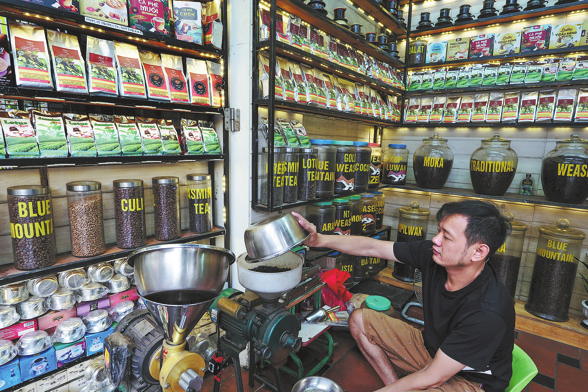Agtech is bright spot amid trade dispute


In South China's Shenzhen, a Silicon Valley company is busy building its second weeding robot to be used for field trials in California spinach fields later this year.
"Our robot kills weeds without herbicides, using only heat energy and food-grade canola oil. One robot provides the equivalent labor of 40 workers at once," said Xiong Chang, CEO of Tensorfield Agriculture.
The reason why the company chose Shenzhen is "the fastest and most capable production timelines for prototyping that we've seen anywhere in the world", said Chang.
Though agriculture is among the worst sectors hit by the trade dispute between the US and China, collaboration on agriculture technology has been relatively untouched in the past year.
Chang said the technology will help address a labor shortage and the proliferation of herbicide-resistant weeds — common challenges for the US and China.
"Agriculture is such a big import and export market. When we're talking about 'trade wars' and political tensions, agriculture will always be a big topic on a national level," said Aaron Magenheim, founder of Ag Tech Insight, a Salinas, California-based agtech consulting firm.
"When you're looking at the big picture, it's a lot harder than if you're looking at smaller pictures," said Magenheim. "But when you break it down to a state-by-state and commodity-by-commodity situation, it's much easier to build relationships."
He said a good example is Kentucky, whose governor visited China earlier this year and met with leaders of several provinces on boosting agriculture business.
"Both sides picked the top 10 commodities to do business with each other," he said.
The tensions between the two countries put the US at a disadvantage, as China is increasing imports from South America, which will "help grow the South America infrastructure and ag-business and economies", he said.
Magenheim also acknowledged that it's "short-lived" because China will produce a lot of food it needs over the time. "The biggest opportunity will be there in Asia in five to 10 years from now," he said.
Roger Royse, lawyer and founder of AgTech Innovation Network in Silicon Valley, agreed, saying that there's a "real good tech sector going on" in Hangzhou and other Chinese cities.
But a problem for both the US and China is that "agriculture was that last frontier of technology", he said.
"Some big software companies have told me that agriculture is behind the times," said Royse. "Even now in some parts of the US, the way people collect data is walking through a field with the pad and a pencil, and they would observe and take notes, and bring it back."
It's the same with China.
"As people leave the country, farmland consolidates and farms get bigger. That requires technology to manage," he said.
"When you look at Alibaba and Tencent in China's digitalization space, you know these giant companies have pretty much transformed the way data is collected in China. But that's not being done very much in the agriculture sector," said Jonathan Hua, accelerator manager of Silicon Valley-based investment advisory firm SVG Ventures.
"So we need that kind of level of connectedness on a farm; we need to be able to pull data from everywhere on a farm. But a lot of these farms in China have not really gone through the digital revolution, using the IoT (internet of things) sensors, data and farmland management platforms," he said.
One of the examples of digital revolution in agriculture is applying Light Detection and Ranging (LIDAR) in farming, said Claire Pribula, managing director of the Yield Lab Asia Pacific, an agrifood tech accelerator.
The remote sensing method used to measure distance, which is also fundamental to self-driving cars, allows growers to view the health and the potential yield of a crop by looking for damage from weather or looking at the chlorophyll levels and trunk dimension of trees, she said.

































